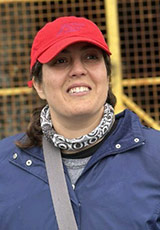Fazilat Yousefi

Current research
In my current NRCan-NBDNRED project with David Lentz (UNB), I am focusing on Heavy Rare-Earth Elements (HREE) and Yttrium enrichment within Early Devonian A-type granites in a New Brunswick context.
A-type granites are known for their distinctive geochemical signatures, often forming in extensional tectonic settings and being rich in elements like HREE and Y, which are critical for various technological applications and transition to the Green Energy Economy.
My research investigates the petrogenesis of these granites, the processes that concentrate rare earth elements and Y, and their potential for economic mineralization. By studying their mineral chemistry, geochemical profiles, and radiogenic isotopic signatures, I aim to provide insights into how these mineralized granites became enriched in HREE and Y, contributing to the broader understanding of these important critical mineral resources.
Past research at UNB
My previous project (PhD at the University of New Brunswick) was focused on the study of Devonian adakitic porphyritic intrusive rocks in New Brunswick, linked to porphyry Cu-Mo-Au mineralization.
These rocks show geochemical signatures typical of subduction-related magmatism, including enrichment in elements like Cs, Rb, and Ba, while being depleted in Nb, Ta, and Ti. Through petrography, zircon U-Th-Pb isotopic analyses, and mineral chemistry studies of zircon, titanite and magnetite, I investigated the magmatic evolution and mineralization potential.
Titanite compositions reveal high concentrations of rare earth elements, while magnetite phenocrysts offer insights into magmatic to hydrothermal systems, contributing to a better understanding of porphyry fertility.
Thesis title: “Petrogenetic Analysis of Arc-Related Devonian Magmatic Rocks in Relation to the Formation of Magmatic Hydrothermal Cu±Mo±Au Deposits in the New Brunswick Segment of the Northern Appalachians”.
